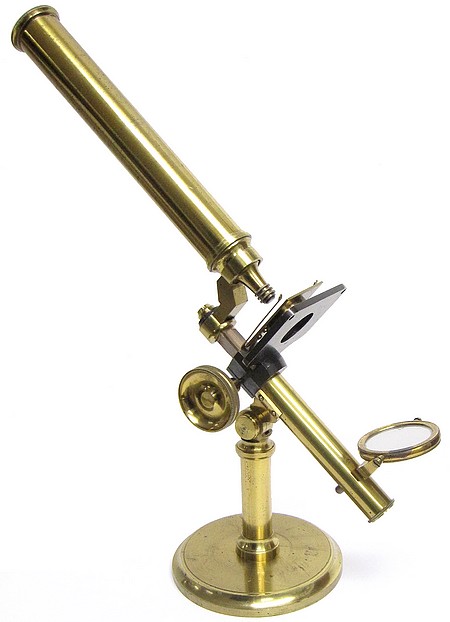
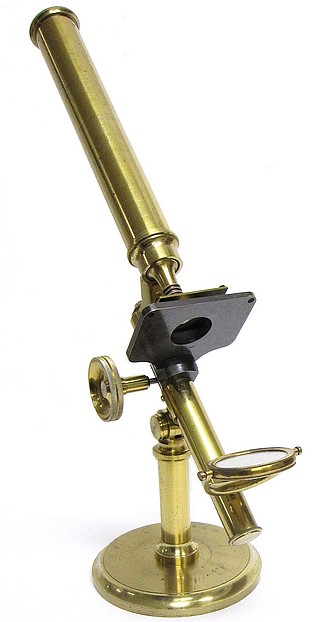
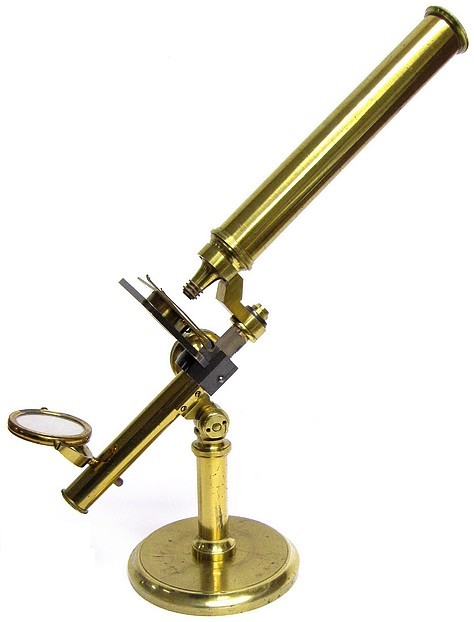
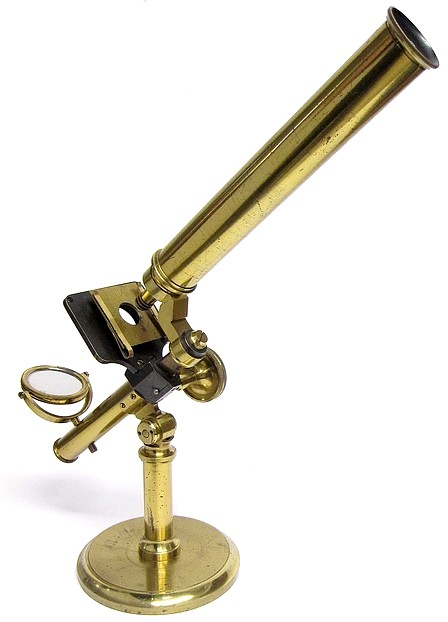
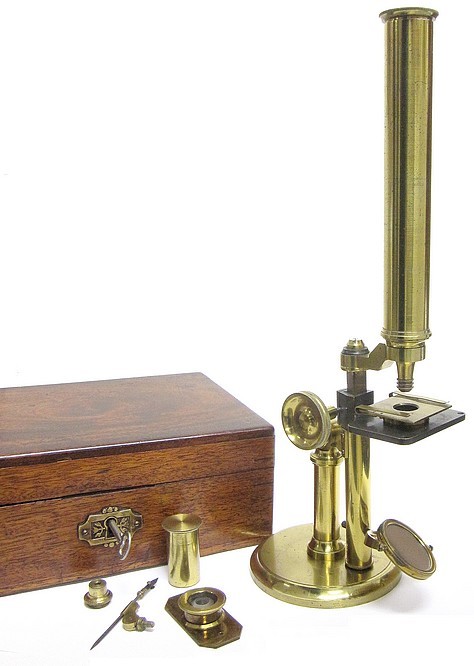
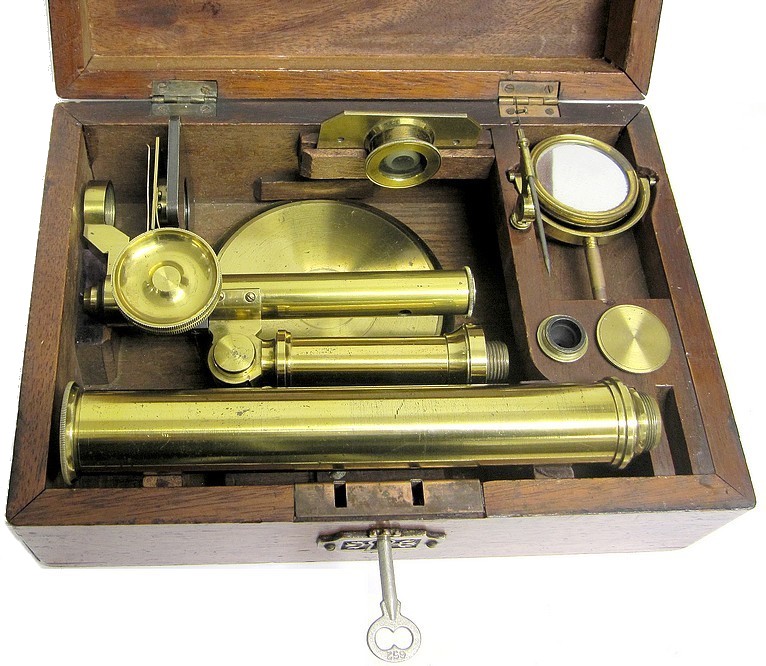
This microscope is a simplified version of those produced in the style of Andrew Pritchard. It is supplied with a single eyepiece, a stage forceps, a live box, a lower power non-achromatic objective, and a French type of triple button objective with canister. The microscope measures about 14-inches in height when inclined for use as shown in the photos.
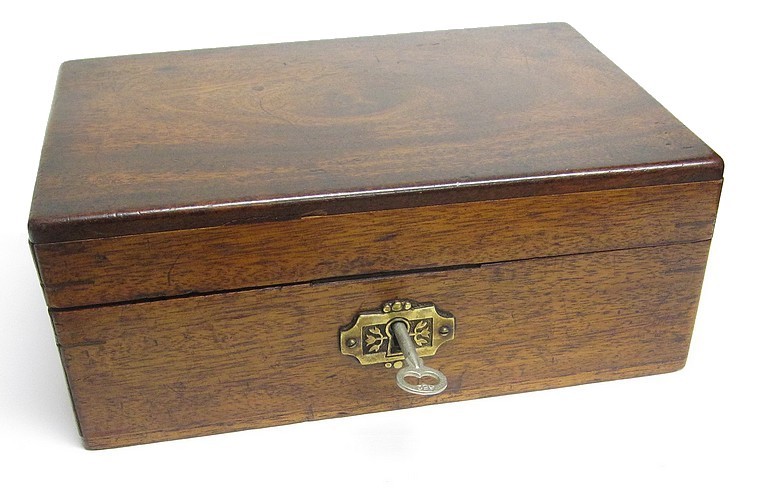
A very similar
microscope, having the same uniquely shaped limb, is
illustrated and described in the book Microscopic
Manipulation by G.T. Fisher published in 1846
where it is referred to as the "Medical Achromatic
Microscope". The illustration from this reference
shows that the firm that made (or retailed?) this
microscope is the optician, publisher, photographer,
and scientific instrument maker T. & R. Willats, London. This
firm (brothers Thomas and Richard) was active at
various addresses in London from 1840s - 1860.
Andrew Pritchard sold a similar microscope.
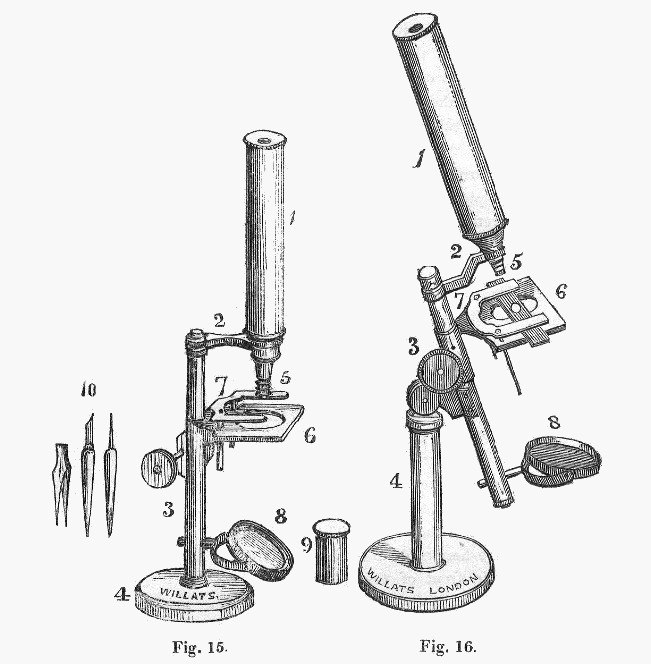
18. Medical Achromatic Microscope.—Another form of compound microscope is represented in the following outline, (fig. 15.) It is particularly adapted for the examination of anatomical and physiological preparations, and from being less complicated in its arrangements is also much less expensive. The stout stand 3 is screwed into the foot 4, and the body 1 is supported by the arm 2. The object-glasses are at 5, the eye-glass and field-glass are of course contained in the body of the instrument; 6 is the moveable stage, and 7 the mirror. The portability, and at the same time high magnifying power of these instruments, renders them exceedingly useful.
Figure 16 is a more recent form of the same instrument; but as its chief difference consists in being arranged in such a way as to allow of the instrument being brought into any convenient position by the joint at 3, no more lengthened detail is requisite. Its internal construction is essentially the same as the former.
A nearly identical microscope is known signed on the base C.W. Dixey, New Bond Street, London and another one signed Marratt, 63, King William St., London Bridge.